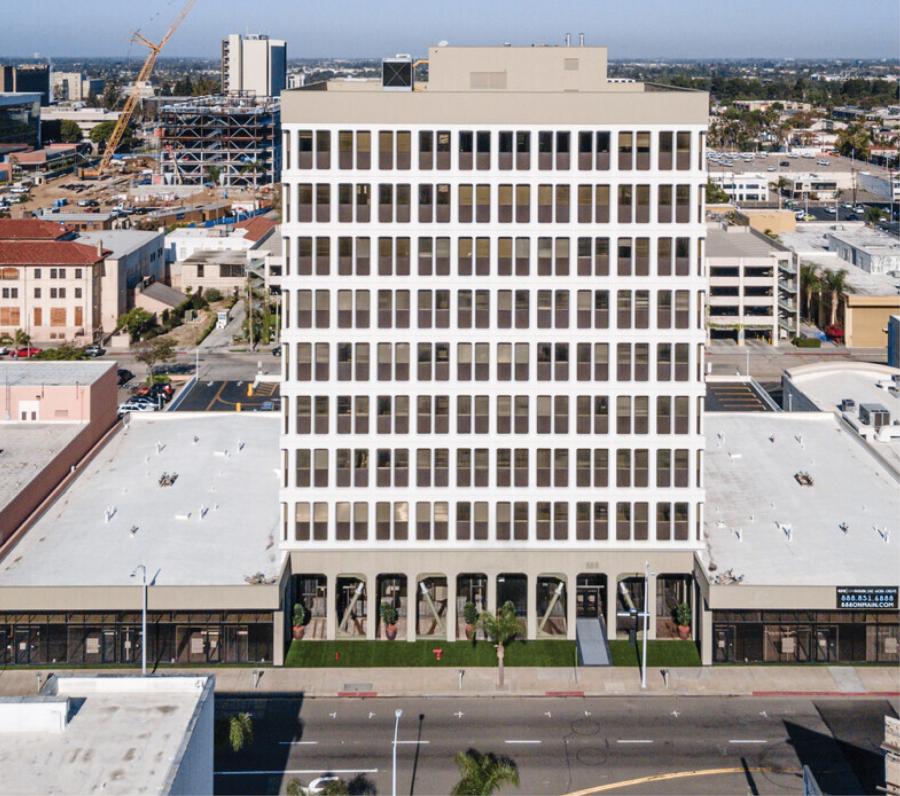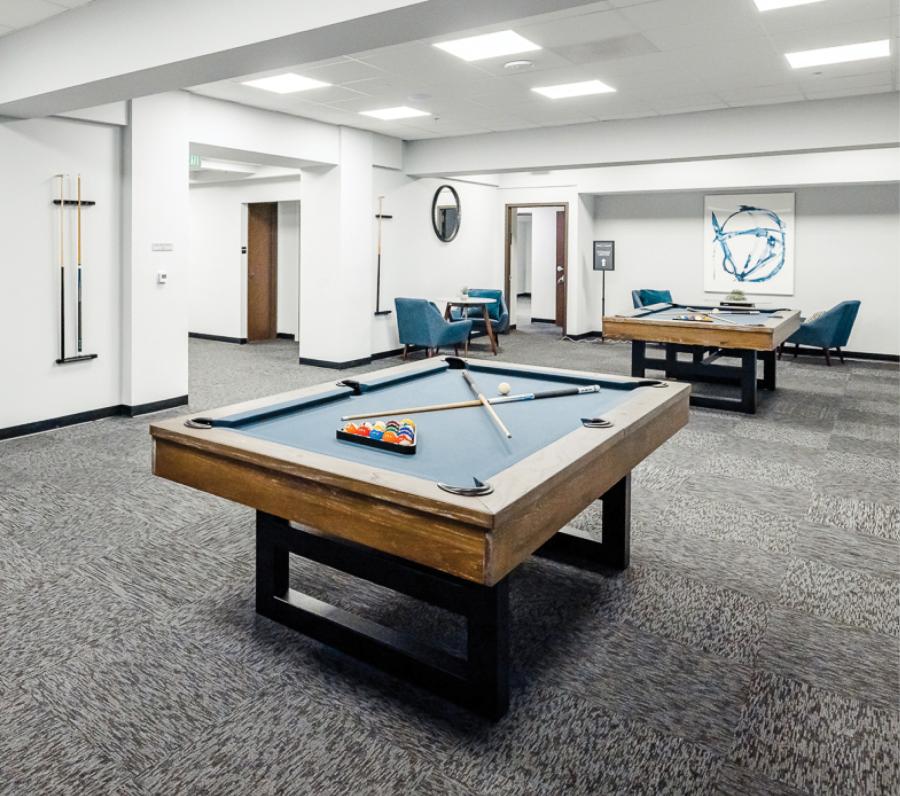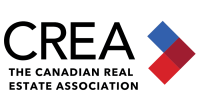
Creative Revitalization
By Jeffrey A. Gould, CCIM, CPM, LEED AP, Michael J. Gion | Summer 2022
Adaptive reuse projects are all the buzz in the commercial real estate sector these days. Repurposing underutilized property is an excellent strategy for many commercial real estate owners to maximize value. States like California and cities like Los Angeles are working to implement adaptive reuse ordinances that allow for by-right adaptive reuse conversions with more flexible building codes for existing properties. Municipalities increasingly see adaptive reuse as a method to convert underutilized commercial buildings into housing so that they can more efficiently meet housing needs outside of ground-up development. According to Yardi Matrix, developers nationwide converted 151 commercial buildings into residential apartments that totaled 20,100 rooms.
“So far, through adaptive reuse alone, this new decade has already created nearly 32,000 apartments, 41 percent of which are in former office buildings,” according to a recent Yardi Matrix report.

However, the process and costs of adaptively reusing commercial buildings into housing can be ripe with challenges. It is critical for commercial real estate owners who are considering adaptive reuse to perform the appropriate up-front due diligence — including land use, design, engineering, construction, rent studies, and financial analysis — to determine the feasibility and risks of these projects. Developers must also understand the jurisdictional landscape to determine the best path for any entitlements needed to support a use change.
One successful project in Santa Ana, Calif., provides a case study for those interested in adaptive reuse. 888 On Main is a 148-unit workforce housing property located within a qualified opportunity zone. One of the first adaptive reuse projects that was approved under Santa Ana’s Adaptive Reuse Ordinance (which was adopted in 2014), this property was built and used as a 10-story high-rise office tower in the heart of Santa Ana’s downtown in the finance and government services district. The property was constructed in 1967 with Welton Becket & Associates (the designer of the iconic Capital records building in Hollywood) as the original architect. Initially, the building served as the Orange County headquarters for Security Bank and later for the Social Security Administration, who vacated in 2014. This unique midcentury poured-in-place structure totals 133,083 sf of gross building area with underground parking.
888 On Main presented the architect, developer, contractors, investors, advisers, and managers of this project with unique opportunities and challenges in converting a 55-year-old office building into multi-family housing.
A Market Transformation
Santa Ana is a city that has been undergoing a transformation. 888 On Main is near a downtown streetcar project that makes it an ideal live-work-play housing project. The property is also adjacent to the prestigious Orange County High School for the Arts, which is a major employer in the downtown core. While this project was underwritten prior to COVID-19, when office vacancy was lower, the pandemic caused vacancies to rise well above 20 percent in Santa Ana, further diminishing the value and utility of office space in the market. Countering the softening office market, though, was the increasing demand for housing in Santa Ana, which has surged over the past few years. Plus, 888 On Main is located in an opportunity zone, making it an ideal site for workforce housing.
Planning and Design
The original developer and contractor, Caribou Industries, kicked off the conceptual planning and design of this project in 2015. As is the case with any successful adaptive reuse projects, the location and original bones of the property made it a good candidate for adaptive reuse to housing. The layout and geometry of the corridors and elevator shafts, the depth of the floorplates, the height of the ceilings, the secured parking, and the unobstructed views from most of the floors helped provide a vision for the what the project would eventually become.
Since the property is also in a qualified opportunity zone, the new investment group structured a portion of the capital stack to allow them and their investors to take advantage of these significant tax incentives.
Even though the building had inherently beneficial design characteristics, the challenges of designing and converting the building to housing were extraordinary. Extensive capital upgrades at both the building and unit level had to be designed and programmed into the project as required by the adaptive reuse ordinance and local governmental agencies. These building-level capital upgrades included seismic upgrades, tower fire sprinklers, a gas-powered generator, security features, and a plumbing waste/vent system that could handle the increased demands of the occupants. Other system and amenity features that were designed and programmed in at the unit level included utility submeters for electric and water, water source heat pumps, and cabling and internet services.

Regarding the floorplans, many design decisions had to be made on the unit layout and unit mix, including how to maximize units and efficiently utilize common area spaces. For instance, the original office building only had two restrooms on each floor, which obviously was not going to work for multifamily. Ultimately, designs called for live-work units with somewhat irregular space configurations on the first floor of the building next to the lobby, designing the fitness and entertainment centers on the basement level in the original bank vault, omitting trash chutes, and creating laundry rooms on each floor.
Adaptive reuse projects frequently present design challenges attributable to existing conditions that are not feasible, and sometimes impossible, to alter. In the case of 888 On Main, its historic designation exacerbated that situation because visible alterations to the building exterior were heavily scrutinized and limited.
Construction
Construction started on the project in 2019. The extensive capital upgrades required under both the Adaptive Reuse Ordinance and governmental agencies — coupled with COVID-19 shutdowns in 2020 — led to construction delays. Ultimately, the property received a certificate of occupancy in May 2021, an approximately three-year construction time frame from start to finish.
“This is an extremely exciting project for us,” says Eddie Lorin, co-founder and CEO of Alliant Strategic Development. “An opportunity like this, to turn a historic building in the heart of Orange County into attainable housing for the local workforce, is special for everyone involved. … This project is a leading indicator of how older, vacant buildings are being converted into modern and productive buildings for the benefit of the community at large.”
Underwriting and Financial Structure
888 On Main presented challenges and opportunities when it came to underwriting and structuring the capital stack. Caribou Industries, the developer/contractor went under contract to sell the property to a new real estate investment group led by Alliant Strategic Development in 2019 when the project was approximately 50 percent complete. The acquiring investment group agreed to pay $54 million for the project.
The project is unique from a financial perspective in that the new investment group incorporated the opportunity zone benefits, obtained Mills Act property tax incentives, and had to underwrite rents and operating expenses without any recent data points on adaptive reuse comps in the submarket.
During due diligence, the investment group completed a rent study, which provided a baseline for underwriting, but it did not identify any comparable high-rise adaptive reuse projects because no comps for this type of property were in the market. Most of the rent comps were for newer low-rise apartment communities that did not have the views nor the amenities of 888 On Main. The new investment group had to take somewhat of a leap of faith that they would be able to meet or exceed their baseline rent where no precedent had been set in the market. Ultimately, the buyer believed that their underwriting of an average rent of $2,194 per month ($3.60 per sf) was not only achievable for a Class A property, but also allowed them to meet the needs of the workforce housing market at 80 percent to 120 percent of the area’s median income.
The investment group also took advantage of some lucrative financial incentives with the project, including qualifying for the California Mills Act incentive because the property was a landmark building on the Santa Ana Historic Register. This incentive provided for significant property tax savings that would help enhance the net operating income on the project after closing.
The new investment group had to take somewhat of a leap of faith that they would be able to meet or exceed their baseline rent where no precedent had been set in the market.
While under contract, the investment group was involved in funding the remainder of the construction and acquired the vacant property with bridge financing in 2020. The project received a certificate of occupancy a few months later, in early 2021. The investment group’s goal was to lease and stabilize the property at +/-90 percent occupancy and refinance out the bridge lender.
Since the property is also in a qualified opportunity zone, the new investment group structured a portion of the capital stack to allow them and their investors to take advantage of these significant tax incentives.
Property Management and Leasing
Maxus Management took over as the property manager, and the first resident moved into the project in July 2021. There were 21 total move-ins by the end of that month. Less than a year later, in March 2022, the project was 88 percent occupied with the goal of stabilization by April 2022. This lease-up time frame exceeded the expectations of both the investment group and property management. Additionally, the rents that the manager achieved in this first year exceeded the rent that the investment group originally underwrote for the deal. The proactive marketing campaign by management, incredible unobstructed views, central location, and property amenities attracted residents to 888 On Main.
While the lease-up has been successful, management has faced and addressed several challenges that are somewhat unique to an adaptive reuse project. One challenge is that there isn’t a trash chute for each floor. In response, management hired a daily trash service for the building. Additionally, the live-work spaces on the first floor have been the most challenging floorplan to lease. The concern of privacy from the street is the largest concern from residents. To overcome this objective, management is rebranding these to flex lofts as well as focusing on networking with corporate companies and setting up a few of the units as furnished, short-term living options.
Conclusion
Adaptive reuse has been a trending topic in commercial real estate for years — something that gained interest well before COVID-19. But in the wake of a pandemic that has fundamentally altered commercial real estates markets, creative solutions are necessary to help rebalance assets across sectors. Whether turning vacant or underutilized shopping centers into logistical hubs or finding ways to meet growing demand for multifamily housing, adaptive reuse is a key tool for imaginative commercial real estate professionals. 888 On Main successfully turned a vacant office property into a thriving 148-unit housing development that looks to be a crucial piece of an iconic Southern California downtown area. There were challenges and obstacles, but those are parts of any deal worth pursuing.






